Ferrari's future: Running repairs
F1 is racing to fix its relationship with Ferrari before the Italian team moves to join rival competitions, including Le Mans, reports Mark Hughes
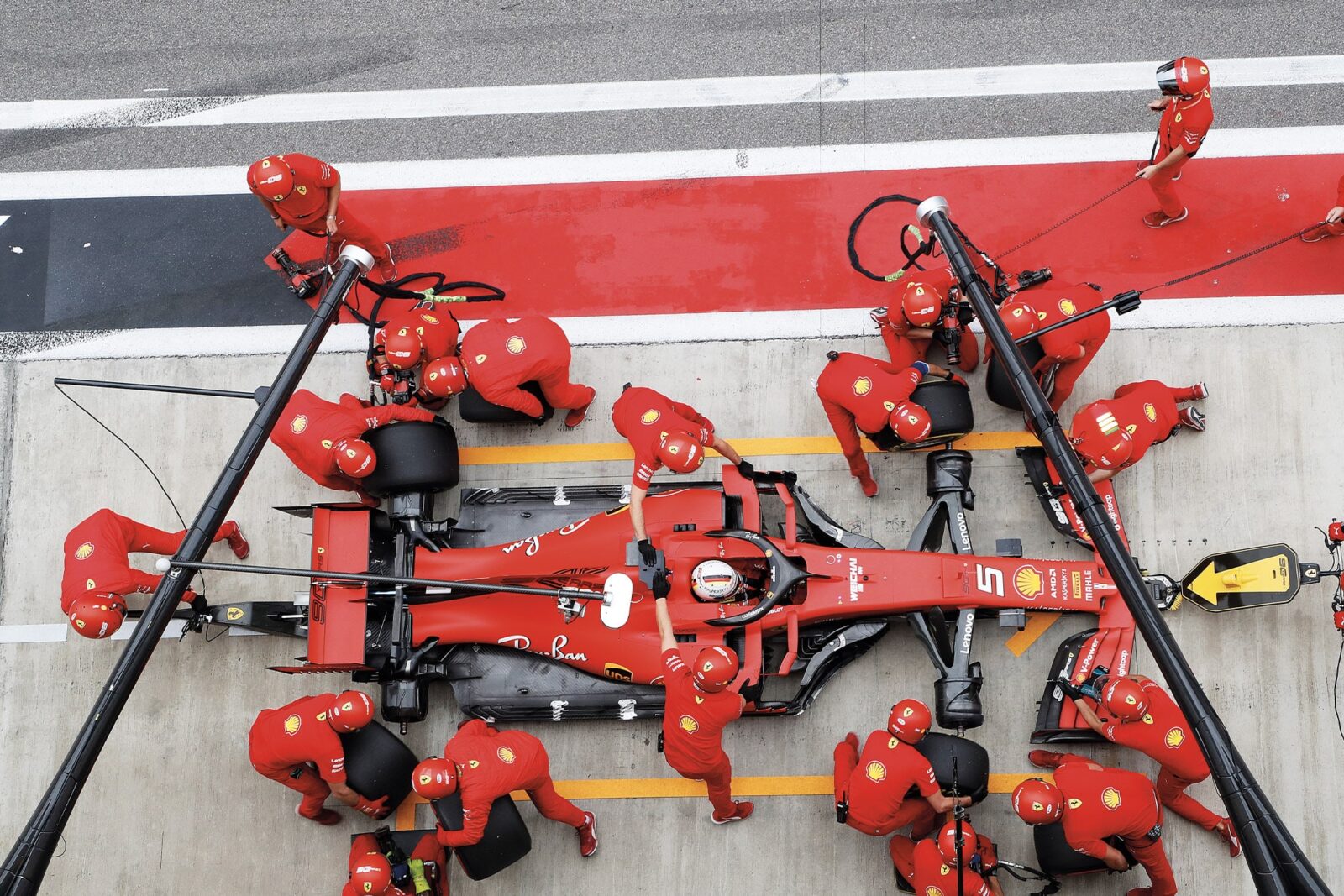
Scrambling for the next phase: Ferrari reacts to a Vettel pitstop in Russia last year, but its long-term future is a far more complex challenge
DPPI
Caught between eras, Formula 1’s struggle to downsize has only been intensified by coronavirus. No team better encapsulates this struggle than Ferrari.
As F1’s poster boy, Ferrari symbolises the excess and exclusivity that is F1’s elixir. Ferrari embodies the aspiration and impossible glamour of some fantasy world that glitters with promise like sun rays dappled in a Mediterranean cove – and that’s where F1 has always lived. Selling a tantalising glimpse of that world is F1’s bread and butter.
To produce that show costs money and requires global scale financing and broadcasting. That money is sucked in from the hard, vulgar commercial world outside the fantasy bubble. So long as oxygen was supplied, the competitive entities inside expanded like goldfish growing to fill their pool. The pool was made smaller by the banking crash of 2008, and it’s been made smaller again by the virus. The fish inside it are still as big as when the pool was full size, and the biggest fish of all is Ferrari. The pond may not be big enough for all the bloated fish to survive, but Ferrari is seen as the key to keeping the pond viable. Ferrari is in a strong negotiating position, but getting what it wants could further endanger its whole marine biosphere.
This is the delicate dance Liberty, the FIA and the teams are having to make around a team that does very nicely indeed out of F1, and which F1 does very nicely out of having. So, what exactly are the numbers being argued about in this dance and what are the implications?
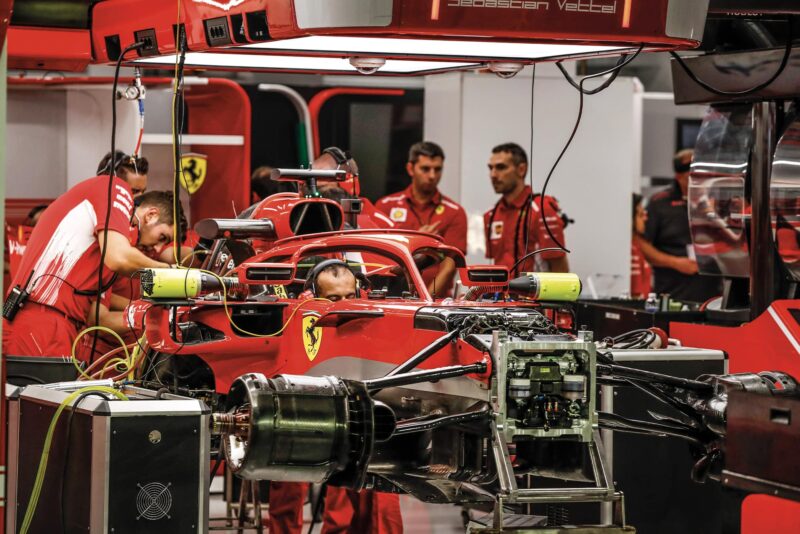
Ferrari fears strict budget cap would force unwanted redundancies
Budget caps
F1’s first-ever budget caps are set to come into force from next season. Originally, this cap was set at $175m, excluding engine manufacture, driver salaries, marketing and the salaries of the highest-paid three employees other than drivers. It’s since been broadly agreed to reduce this figure down to $145m for the first year – ie 2021. But this number seems to be Ferrari’s line in the sand, even though Liberty and the FIA wish to glide down to a yet smaller number in 2022. Some smaller teams, and McLaren, are pushing for a severe cut to $100m. Red Bull’s Helmut Marko suggests $130m is ideal while the FIA’s Jean Todt views even such budgets as ‘absurd’.
As can be seen, even the currently- proposed tighter cap of $145m is more than the outlay of the bottom-spending half of the teams. So the cap will impose no spending limitation upon them, though that doesn’t mean they can raise enough income to match spending. But it represents a painful reduction for the top three teams.
Ferrari’s preoccupation is to avoid making extensive redundancies. “The $145m level is already a new and demanding request compared to what was set out last June,” said the team’s boss Mattia Binotto last month. “It cannot be attained without further significant sacrifices, especially in terms of our human resources. If it was to get even lower, we would not want to be put in a position of having to look at other further options for deploying our racing DNA.”
This was interpreted by some as a ‘Ferrari quit’ threat, but that wasn’t the intention of the message at all – as Binotto himself confirmed. “To clarify,” he said. “If the budget cap became too severe, we would look at other competitions in addition to F1.”
Not only is Ferrari hesitant to make the number of redundancies it feels would be necessary to reach a cap any lower than $145m, but it also doesn’t wish to lose the core skills those redundancies would represent. Furthermore, it could cause Ferrari to fall foul of Italian employment law.
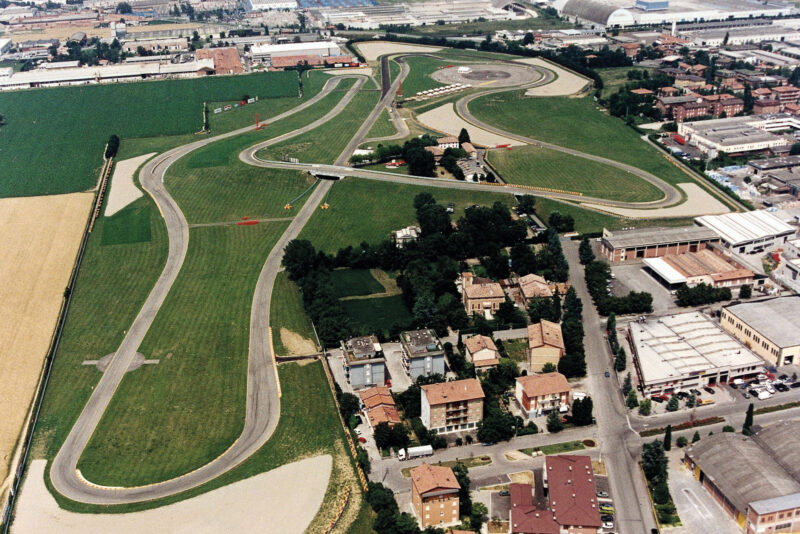
How might the role of Fiorano change with further F1 restrictions?
Getting down to just the $145m target is likely going to involve some redundancies among Ferrari’s 1000-strong workforce. There are likely to be economies made in the composites and aero departments, reducing the team’s ability to develop its car as quickly. There will be expected savings made in the replacement of expensive lightweight materials with cheaper and heavier options. Such economies would arguably only be bringing the team towards the available resource of the smaller teams. But Ferrari fears going further would then put it at a competitive disadvantage to some customer teams who buy engines and other components at less than cost, while the engine-producing works teams (Ferrari, Mercedes and Renault) bear the full research and development costs. This, argues Ferrari, would allow the better- funded customer teams to devote more of their capped budget to performance. Ferrari is referencing Red Bull – and to a lesser extent, McLaren – in this fear.
“Ferrari fears a competitive disadvantage to customer teams”
As such, Ferrari is advocating a two-tier cost cap, with additions allowed for engine producers and subtractions from the cap for customer teams. That idea reportedly hasn’t found much favour from either the FIA or Liberty and, at the time of writing, efforts were being made to find common grounds on further controlling the cost side of the equation. Already certain power unit development limitations and spec freezes are set to be put in place. The postponing of the radical new technical regulations from 2021 to 2022 – with no aerodynamic research allowed on the ’22 cars this year – has also been done with a view to cost reduction. But Ferrari is unhappy with this, arguing that although the new-spec cars incur a greater initial investment, they will be cheaper to operate than the current cars, with longer life components and simpler aerodynamics featuring less development potential.
There would seem, in short, something of an impasse between Ferrari and Liberty/ FIA regarding the cost cap beyond 2021. This in turn has played its part in Liberty’s recent confirmation that a new Concorde Agreement, which sets out the financial terms and commits the teams to F1 for the agreement’s duration – set to come into force next year – has been put on the backburner.
Negotiation skills
As the highest-profile name, Ferrari has always received highly favourable commercial terms from F1, and an informal agreement had been reached between Liberty and the Scuderia before the current crisis. Ferrari’s hardline position on the proposed cost cap changes – and the financial implications of the COVID-19 lockdown – is complicating the consensus.
Part of the equation Liberty is trying to solve among all the teams – but to which Ferrari is absolutely key – is that of balancing spend with income. Even before the coronavirus, the revenue stream for F1 was expected to decline as boom-time-era hosting fees and TV deals came to be renewed. With F1 income expected to shrink, but the teams still sized around the previous conditions, the cost cap is a way of trying to save the teams from themselves.
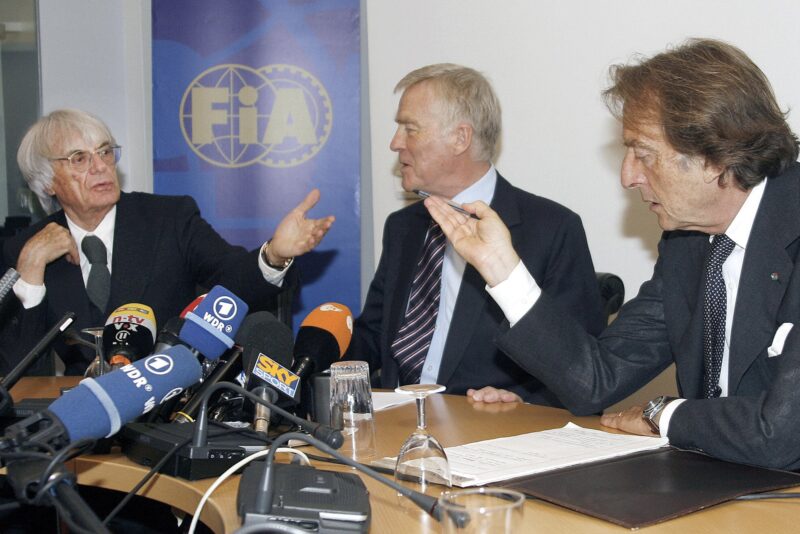
Ferrari’s political expertise dwindled…
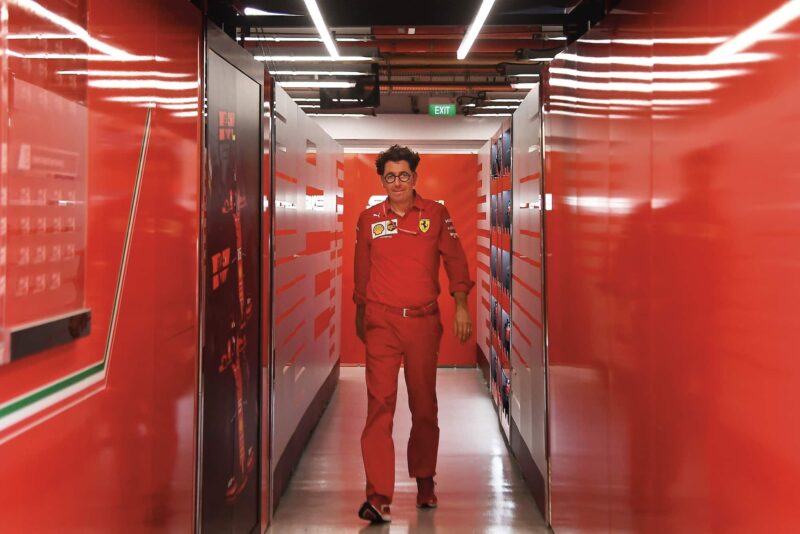
…and will test Binotto
On the income side of the equation, Ferrari receives more from F1’s pot than any other, as befitting its perceived status and as a result of Bernie Ecclestone having prioritised its early signature on previous Concorde Agreements in order to weaken the negotiating position of the others.
Ferrari was paid $28m more than the next highest-grossing team (Mercedes) in 2019. The difference between Ferrari’s income from F1 and its total F1 spend, otherwise known as the difference that must be found from sponsors or ownership, was around $255m in 2019. Mercedes’ was closer to $300m. Even after sponsorship income, every team is making a loss, if engine costs are taken into account. But Ferrari is losing less than some. Renault’s stands as the most expensive programme, with the difference between income and expenditure an estimated $150m. Ferrari’s more favourable share of F1’s revenue, combined with better results, means its shortfall is little more than one-third of that. Ferrari’s operational losses are hardly any greater than those of the much smaller teams.
Crucially, the above 2019 income numbers are derived from a full season’s worth of racing. They will look nothing like that this year, given the ongoing catastrophic effect of the coronavirus on the F1 calendar, but the position of Ferrari relative to the other teams remains largely unchanged.
Hence there is real opposition from the others to Ferrari’s insistence that its spend should not be brought more in line with those of the smaller teams. It’s a tricky position from which the relatively inexperienced Louis Camilleri and Binotto must negotiate. Any accommodation by the others is made yet more difficult by the Ferrari/FIA engine controversy, and the secret resolution that Ferrari refuses to go public with.
So if, as looks likely, the cost cap is set at a level for 2022 that Ferrari finds unacceptable, what are its options if it’s determined to avoid making significant redundancies inside the race team?
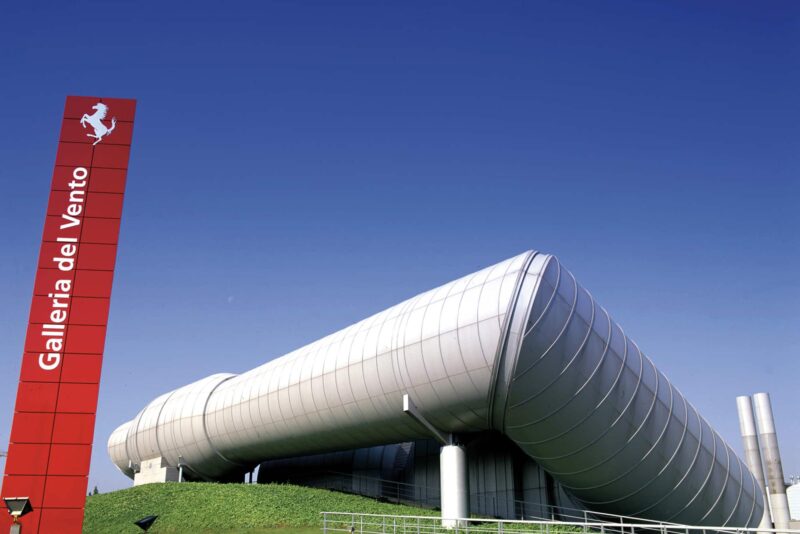
Ferrari’s wind tunnel could help it redeploy its ‘racing DNA’ elsewhere
Additional series
Ferrari’s stated position of possibly looking at ‘other high-profile series’ in addition to F1 is in absolute terms less of a threat than its previous quit threats. But it’s much more believable. Any quit threat would be an empty one, and Ferrari knows this. F1 and Ferrari feed the image of the other. It’s a symbiotic relationship. The sheen of Ferrari’s brand would probably carry for a few years after any withdrawal from the sport’s top category, but would ultimately be damaged.
But contesting, say, the Le Mans 24 Hours or the World Endurance Championship in addition to F1 would only add to Ferrari’s brand value – while detracting from F1’s. If F1 could no longer lay claim to being the only high-profile series in which Scuderia Ferrari competed, it would lose something. The asset value of the F1 brand would be lessened.
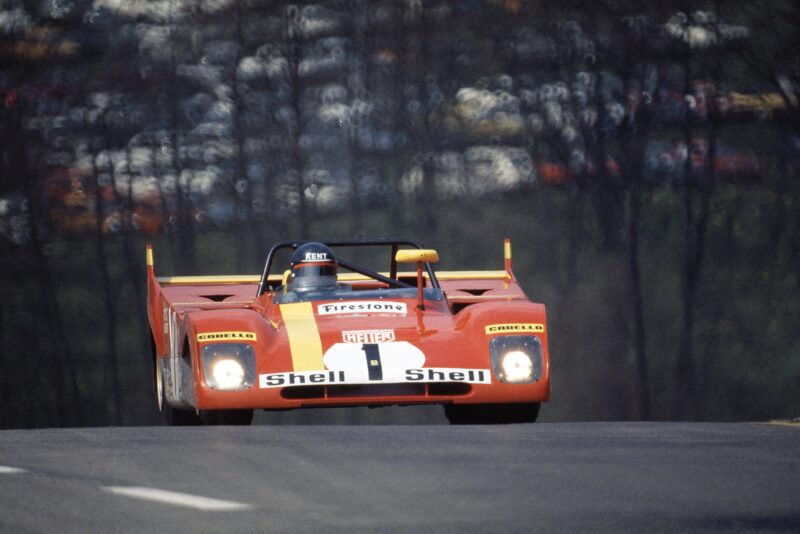
Sports car success: Ickx, Regazzoni took second in 1972’s Spa 1000Kms in 312PB
If Ferrari wished to maintain its previous spend to keep personnel and core skills within the company but was forced to adhere to a cost cap well below the proposed 2021 level of $145m, it would theoretically leave enough spare to contest Le Mans. If forced to lop $100m off its 2019 F1 budget of $205m (after exclusions), that $100m would be a more than generous WEC budget, which would include Le Mans. It would be a huge deal for both Ferrari and Le Mans – the two had been synonymous for so long before Ferrari decided to concentrate solely on F1 from the mid-70s. It would entail designing cars for widely different technical formulas, but there’d be crossover technologies that could fertilise both programmes.
The excitement created by a state-of-the- art WEC Ferrari, driven by Charles Leclerc and whichever driver replaces Sebastian Vettel can easily be imagined, with potentially a second car utilised for Kimi Räikkönen and Antonio Giovinazzi.
The threat to F1 of such a programme becomes more focused if it’s imagined that Ferrari’s presence might lend the series, and Le Mans in particular, such status that other automotive giants may perceive it to be of greater promotional value than F1 for a lesser cost. What if Mercedes and Honda switched? What would be the financial implications for F1 at such a delicate time?
These are of course only imaginary scenarios, but they implicitly back up Ferrari’s position in this disagreement.
Aside from Le Mans and the WEC, it is Motor Sport’s understanding that Ferrari is specifically not interested in contesting Formula E, but it could be interested in an IndyCar programme. This could no longer entail Ferrari building its own car – as it did for a planned 1986 Indycar programme – because of IndyCar’s single-spec Dallara chassis format. But Ferrari could develop its own engine and enter its own team, enjoying huge exposure in the American market. Again, this could feasibly be done within the budget created by the regulation-restricted F1 spend.
The virus has hastened a crucial moment for F1. It faces an existential crisis. Can it contract quickly enough to be viable in what’s sure to be an obliterated global economy? Can it do this without losing the exclusive presence of the biggest jewel in its crown?
The numbers game
The cost-cutting challenge highlights the disparity between the haves and the have-nots, and has worried Ferrari
Budgets |
2019 estimate |
After exclusions* |
| Mercedes | $480m | $230m |
| Ferrari | $460m | $205m |
| Red Bull | $350m | $195m |
| Renault | $275m | $150m |
| McLaren | $250m | $150m |
| Proposed ’21 budget cap $145m | ||
| Racing Point | $185m | $110m |
| Haas | $175m | $110m |
| Alfa | $140m | $100m |
| Toro Rosso | $140m | $100m |
| Williams | $150m | $120m |
*Permitted exclusions from the budget cap are engine manufacture, driver salaries, marketing costs and the salary of the highest-paid three employees other than drivers.

